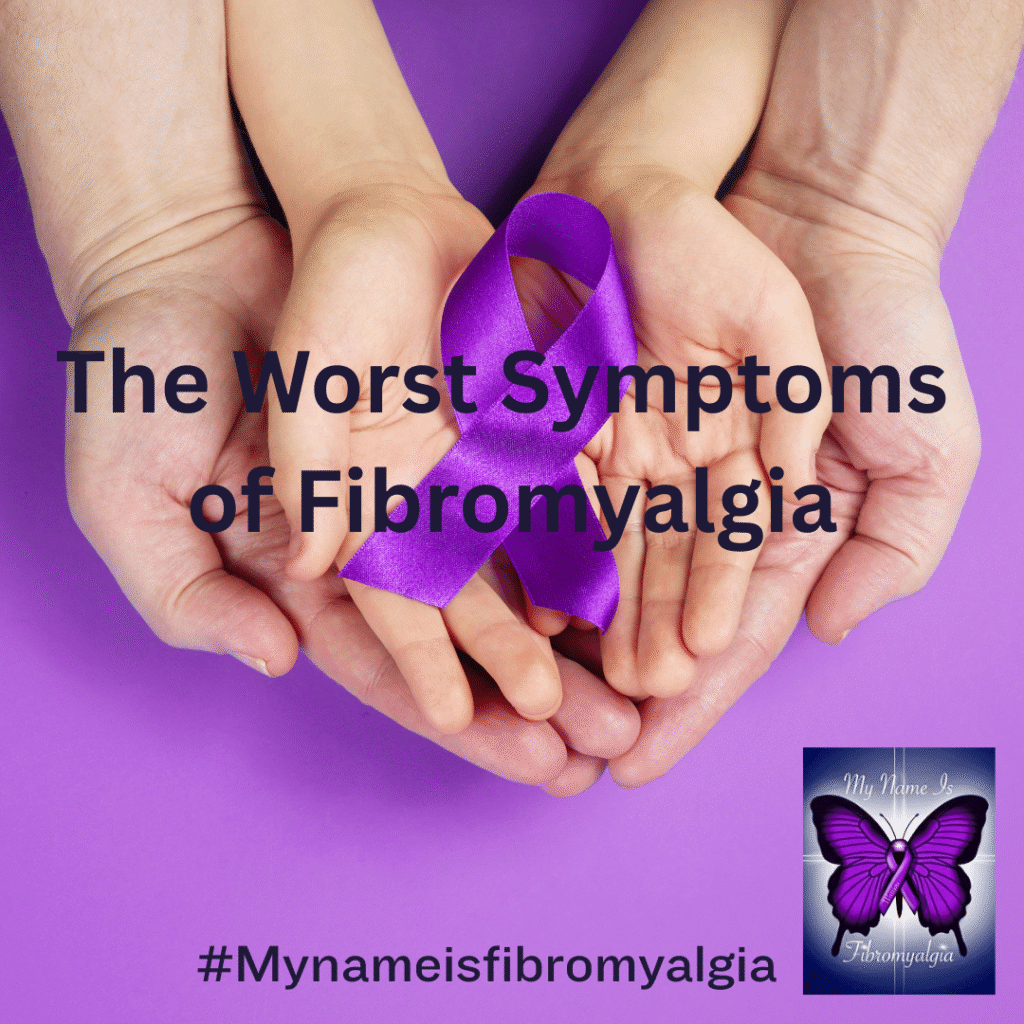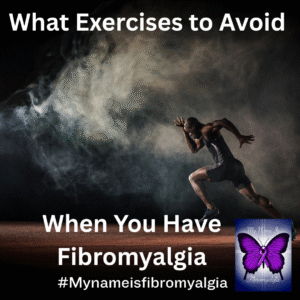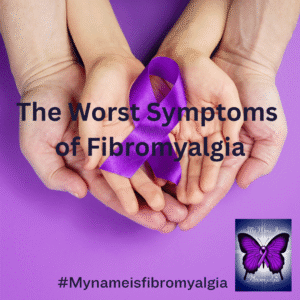The Worst Symptoms of Fibromyalgia

The Worst Symptoms of Fibromyalgia.
Some symptoms are more common and more severe than others.
The worst symptoms of fibromyalgia can vary from person to person, but some of the most common and debilitating symptoms include:
Widespread pain: This is the most common symptom of fibromyalgia. The pain can be mild to severe, and it can be constant or intermittent. It can be hard to pinpoint the exact location of the pain.
Fatigue: another common symptom of fibromyalgia. Getting the appropriate amount of sleep is nearly impossible. When you do get some sleep, you may not feel rested.
Tenderness: People with fibromyalgia often have tender points throughout their body. These are areas that are painful when touched.
Cognitive difficulties: People with fibromyalgia may also experience cognitive issues, such as difficulty concentrating, remembering things, and processing information, referred to as “fibro fog.”
Sleep problems: People with fibromyalgia often have difficulty sleeping. They may have trouble falling asleep, staying asleep, or both.
Headaches: Headaches are also a common symptom of fibromyalgia. They can be tension headaches, migraines, or other types of headaches.
Irritable bowel syndrome (IBS): People with fibromyalgia are more likely to experience IBS symptoms, such as abdominal pain, bloating, and constipation or diarrhea.
Anxiety and depression: People with fibromyalgia are also more likely to experience anxiety and depression.
In addition to these symptoms, people with fibromyalgia may also experience:
- Painful menstrual periods
- Restless legs syndrome
- Temperature sensitivity
- Sensitivity to light and sound
The severity of fibromyalgia symptoms can vary from person to person. Some people may experience only a few mild symptoms, while others may experience many severe symptoms. The symptoms can also fluctuate over time.
If you are living with fibromyalgia, it is vital to talk to your doctor about your symptoms. There is no cure for fibromyalgia, but there are treatments available that can help manage the symptoms.
Caring for Yourself When You Have Fibromyalgia
In addition to seeking medical treatment, there are things you can do to help manage your fibromyalgia symptoms and improve your quality of life. These include:
Getting regular exercise: Exercise can help to improve your mood, reduce pain, and increase your energy levels.
Eating a healthy diet: Eating a healthy diet can help to improve your overall health and well-being.
Getting enough sleep: Getting enough sleep is vital for both physical and mental health.
Managing stress: Stress can worsen fibromyalgia symptoms. Find healthy ways to manage stress, such as yoga, meditation, or spending time in nature.
If you are living with fibromyalgia, remember you are not alone. There are people who understand what you are going through and can offer support. There are resources available to help you manage your symptoms and improve your quality of life.
Additional Resources
https://www.google.com/search?q=https://www.fibromyalgia-network.org/
Additional Notes
It is important to note that not everyone with fibromyalgia will experience all of these symptoms.
The severity of fibromyalgia symptoms can vary from person to person.
There is no cure for fibromyalgia, but there are treatments available that can help manage the symptoms.
It is vital to talk to your doctor about your symptoms and develop a treatment plan that will work for you.
Please note: This article is for informational purposes only.





